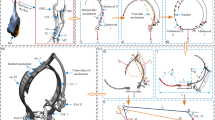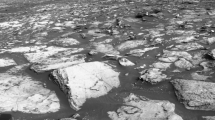Abstract
This paper describes the design and fabrication of a 16-element transducer array for airborne ultrasonic imaging operating at 150 kHz, that can operate both at close range (50 mm) in the near field of a synthetic aperture, and up to 250 mm. The proposed imaging technique is based on a modified version of the delay and sum algorithm implemented with a synthetic aperture where each pixel amplitude is determined by the integration of the signal obtained by the coherent summation of the acquired signals over a delayed window with fixed length. The image reconstruction methods using raw data provides the possibility to detect targets with smaller feature size on the order of one wavelength because the coherent signals summation over the selected window length while the image reconstruction methods using the summation of enveloped signals increases the amplitude response at the expenses of a lower spatial resolution. For the implementation of this system it is important to design compact airborne transducers with large field of view and this can be obtained with a new design of hemi-cylindrical polyvinylidene fluoride film transducers directly mounted on a printed circuit board. This new method is low cost and has repeatable transducer characteristics. The complete system is compact, with a modular architecture, in which eight boards with dual ultrasonic channels are mounted on a mother board. Each daughter board hosts a microcontroller unit and can operate with transducers in the bandwidth 40–200 kHz with on-board data acquisition, pre-processing and transfer on a dedicated bus.















Similar content being viewed by others
References
Knoll, A. C. (1991). Ultrasonic holography techniques for localizing and imaging solid objects. Robotics and Automation, IEEE Transactions on, 7(4), 449–467.
Hayes, M. P., & Gough, P. T. (1992). Broad-band synthetic aperture sonar. Oceanic Engineering, IEEE Journal of, 17(1), 80–94.
Munro, W. S. H., & Wykes, C. (1994). Arrays for airborne 100 kHz ultrasound. Ultrasonics, 32(1), 57–64.
Vossiek, M., Magori, V., & Ermert, H. (1994). An ultrasonic multielement sensor system for position invariant object identification. In Ultrasonics Symposium, 1994. Proceedings, 1994 IEEE (vol. 2, pp. 1293–1297). IEEE.
Capineri, L., Fiorillo, A. S., Masotti, L., & Rocchi, S. (1997). Piezo-polymer transducers for ultrasonic imaging in air. Ultrasonics, Ferroelectrics, and Frequency Control, IEEE Transactions on, 44(1), 36–43.
Hayes, M. P. (1997). Ultrasonic imaging in air with a broadband inverse synthetic aperture sonar. http://www.cs.cmu.edu/afs/.cs.cmu.edu/Web/People/motionplanning/papers/sbp_papers/integrated2/hayes_ultr_synthetic_ap.pdf.
Bovetti, P., Capineri, L., Masotti, L., & Rocchi, S. (1996). New perspectives for 3D US scanners in air. In presented at 1996 IEEE Ultrasonics Symposium, 1996. Proceedings (vol. 1, pp. 761–764 vol.1). doi:10.1109/ULTSYM.1996.584084.
Capineri, L., Masotti, L., & Rocchi, S. (1998). A 3D airborne ultrasound scanner. Measurement Science and Technology, 9(6), 967. doi:10.1088/0957-0233/9/6/014.
Medina, L., & Wykes, C. (2001). Multiple target 3D location airborne ultrasonic system. Ultrasonics, 39(1), 19–25.
Brudka, M., & Pacut, A. (2002). Intelligent robot control using ultrasonic measurements. Instrumentation and Measurement, IEEE Transactions on, 51(3), 454–459.
Yamashita, K., Murakami, H., Fukunaga, T., Okuyama, M., Aoyagi, S., & Suzuki, Y. (2002). Ultrasonic micro array sensor using piezoelectric PZT thin film and resonant frequency tuning by poling. In Applications of Ferroelectrics, 2002. ISAF 2002. Proceedings of the 13th IEEE International Symposium on (pp. 487–490). IEEE.
Yamashita, K., Chamsomphou, L., Nishimoto, H., & Okuyama, M. (2005). A new method of position measurement using ultrasonic array sensor without angular scanning. Sensors and Actuators, A: Physical, 121(1), 1–5.
Ealo, J. L., Seco, F., & Jimenez, A. R. (2008). Broadband EMFi-based transducers for ultrasonic air applications. Ultrasonics, Ferroelectrics, and Frequency Control, IEEE Transactions on, 55(4), 919–929.
Ealo, J., Camacho, J., Seco, F., Fritsch, C., Thompson, D. O., & Chimenti, D. E. (2010). Ultrasonic air-coupled inspection of textile materials using ferroelectret-based phased arrays. In Aip Conference Proceedings (vol. 1211, p. 933).
Park, K. K., & Khuri-Yakub, B. T. (2013). 3-D airborne ultrasound synthetic aperture imaging based on capacitive micromachined ultrasonic transducers. Ultrasonics, 53(7), 1355–1362.
Dahl, T., Ealo, J. L., Bang, H. J., Holm, S., & Khuri-Yakub, P. (2014). Applications of airborne ultrasound in human–computer interaction. Ultrasonics, 54(7), 1912–1921. doi:10.1016/j.ultras.2014.04.008.
Taylor, J. D. (Ed.). (2012). Ultrawideband radar: Applications and design. Boca Raton: CRC Press.
Álvarez, F. J., Urena, J., Hernandez, A., Jimenez, A., De Marziani, C., Villadangos, J. M., & Perez, M. C. (2007). Detecting ultrasonic signals in a turbulent atmosphere: performance of different codes. In Presented at the IEEE International Symposium on Intelligent Signal Processing, 2007. WISP 2007 (pp. 1–6). doi:10.1109/WISP.2007.4447649.
Toda, M. (2002). Cylindrical PVDF film transmitters and receivers for air ultrasound. Ultrasonics, Ferroelectrics, and Frequency Control, IEEE Transactions on, 49(5), 626–634.
Kazakov, V. V. (2002). On particularities of choice of ultrasonic transducers features at air location. XX Session of the Russian Acoustical Society (pp. 353–356). Moscow.
Capineri, L., Fiorillo, A. S., Masotti, L., & Rocchi, S. (1994). Array of PVDF sensors for ultrasonic imaging in air. In Presented at 1994 IEEE Ultrasonics Symposium, 1994. Proceedings (vol. 1, pp. 487–490). doi:10.1109/ULTSYM.1994.401634.
IEEE Standard on Piezoelectricity. (1988). ANSI/IEEE Std 176-1987, 0_1–. doi:10.1109/IEEESTD.1988.79638.
Lee, H., & Wade, G. (1986). Modern acoustic imaging. New York: IEEE Press.
Macovski, A. (1979). Ultrasonic imaging using arrays. Proceedings of the IEEE, 67(4), 484–495.
Peterson, D. K., & Kino, G. S. (1984). Real-time digital image reconstruction: A description of imaging hardware and an analysis of quantization errors. IEEE Transactions on Sonics and Ultrasonics, 31(4), 337–351.
Acknowledgments
Financial support to this research was obtained by National Semiconductors (now Texas Instruments) and the authors wish to acknowledge personal contributions and suggestions by Dr. Giovanni Frattini and Dr. Maurizio Granato.
Author information
Authors and Affiliations
Corresponding author
Rights and permissions
About this article
Cite this article
Capineri, L., Bulletti, A., Calzolai, M. et al. An Airborne Ultrasonic Imaging System Based on 16 Elements: 150 kHz Piezopolymer Transducer Arrays—Preliminary Simulated and Experimental Results for Cylindrical Targets Detection. Sens Imaging 17, 11 (2016). https://doi.org/10.1007/s11220-016-0137-4
Received:
Revised:
Published:
DOI: https://doi.org/10.1007/s11220-016-0137-4




